Energy television. Video receivers on the battlefield
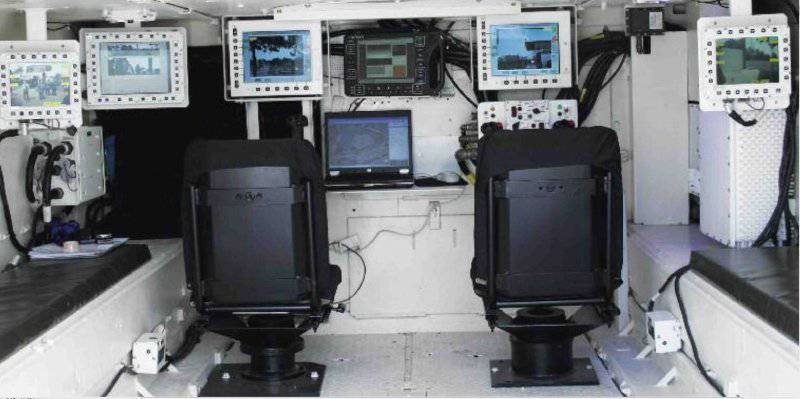
The Israeli company Elbit Systems manufactures various remote video terminals, including models installed on vehicles, such as Transportable Drop-In Tactical Video Receiver. It can display images on multiple displays inside the platform.
Just 15 years ago, the idea of watching videos on a cell phone might seem strange and fantastic. Today, it’s as common as making a call or reading a text message. The requirements of the military for watching videos in motion were the impetus for the creation of a wide variety of remote (remote) video terminals or RVT (Remote Video Terminal)
Thanks to the significant development of communication technology over the past twenty years, it is now possible to use a cell phone as a miniature mobile TV or even a movie theater. Teenagers take it for granted that they can watch YouTube movies about dogs on skis or the latest show business sensations. On the battlefield, such opportunities require an overall more serious approach. There's been a "revolution" drones”, which resulted in an unprecedented proliferation of unmanned vehicles. They allow soldiers not only to see "what's going on over the next hill" (the Duke of Wellington's definition of military information gathering), but also to survey vast areas of land or water, providing near-satellite operational and strategic intelligence.
The appearance of video receivers on the battlefield allows individual servicemen to view video images collected by drones and other optoelectronic systems (for example, overhead container sighting and navigation systems), ground and airborne image acquisition systems, or even satellite images. It is not surprising that the recent and ongoing military campaigns in Afghanistan, Iraq, Mali and elsewhere in the world, as well as the widespread use of drones, have contributed to the development and distribution of such receivers. The article will discuss some of these systems currently available on the market.
AAI CORPORATION
Several companies mentioned in this article have developed terminals that are easily carried or worn (for example, on hand), which allows soldiers to see the resulting image wherever they go. AAI Corporation, working together with the British QinetiQ, has developed a wearable Remote Video Terminal (WRVT) wearable remote video terminal. The WRVT terminal uses most of the technology developed by AAI for its One System Remote Video Terminal (OSRVT), which was supplied in large quantities by the US military in Afghanistan and most recently by the American contingent in Iraq. WRVT can receive images at C-band (4-8 GHz), L-band (1-2 GHz) and S-band (2-4 GHz) frequencies. The terminal has a mass less than 7 kg; the display is carried in the serviceman’s vest, and the antenna and transceiver are placed in the corresponding knapsack.
The OSI video terminal from AAI can be installed on a variety of UAVs, including the RQ-7 Shadow, the Northrop Grumman RQ-5 Hunter from the Northrop Grumman RQ-11 Aerovironment, the MQ-9 Gray Predator and the MQ-1C Gray from General Atomics. Naturally, he can also receive images from traditional manned aircraft, such as AH-64D Apache from McDonnell-Douglas / Boeing and a reconnaissance helicopter OH-58D Kiowa Warrior Bell. One of the components of the ORSVT system is a hardened computer that runs under any version of Windows. The system can process analog and digital signals in the C-band, in the L, S and Ku bands (12-18 GHz), and its modular design allows it to be configured for portable, fixed, vehicle-mounted, airborne, or shipboard applications. In addition to receiving images from the platforms described above, ORSVT can display video transmitted from the AN / AQQ-28 (V) Litening suspended container sighting and navigation systems manufactured by Lockheed Martin.
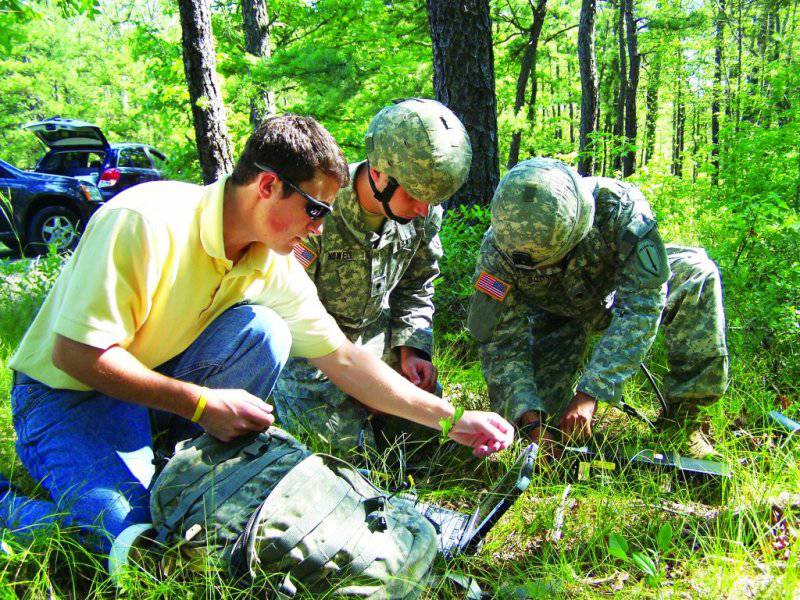
The American company AAI Corporation has developed the One System Remote Video Terminal video terminal, better known by the acronym OSRVT. He is currently widely deployed in the US Army
AERONAUTICS
Given the many years of experience that the Israeli army gained during the operation of its UAVs, it is not surprising that Israeli companies, such as Aeronautics, offer RVTs for use with unmanned aerial vehicles. Along with the display of images, the terminal from Aeronautics can display the coordinates of a drone (unmanned aerial vehicle with impact capabilities) and targets in its field of view on a map. This is especially useful if the drone provides artillery fire control. Soldiers can see the image on their console, worn over body armor, or in an optional eyepiece, to which the antenna transmits data placed in a knapsack. The system is not so bulky, but still weighs five kilograms; It has a range of approximately 30 km. Power is supplied either from rechargeable batteries or from the power grid of the machine.
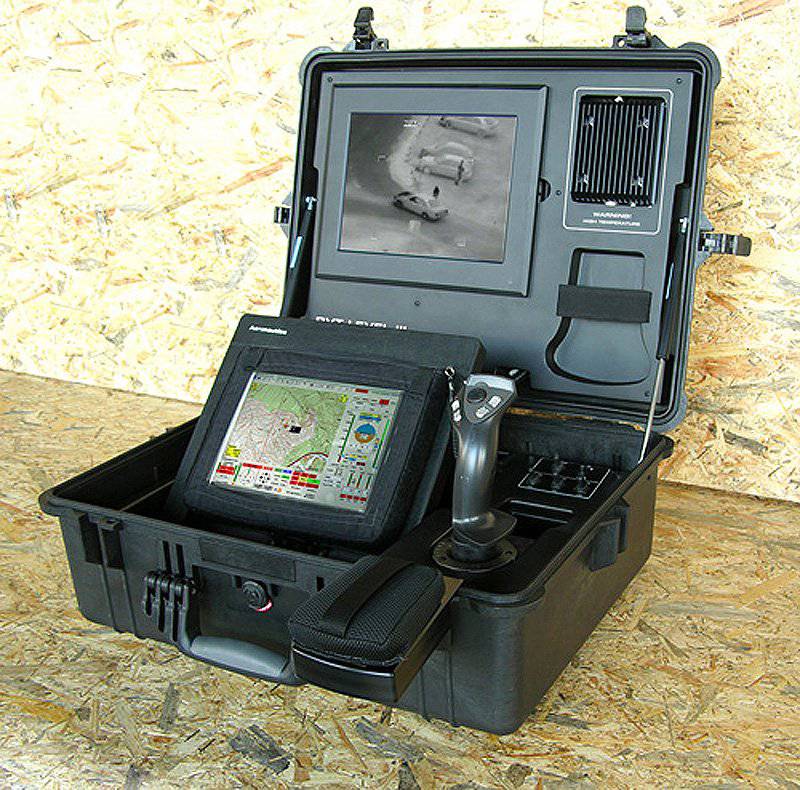
The Israeli company Aeronautics has developed a remote video terminal, which allows the so-called “Level 3” control over the UAV, as well as viewing images. Level 3 control allows the user to activate the on-board equipment of the aircraft
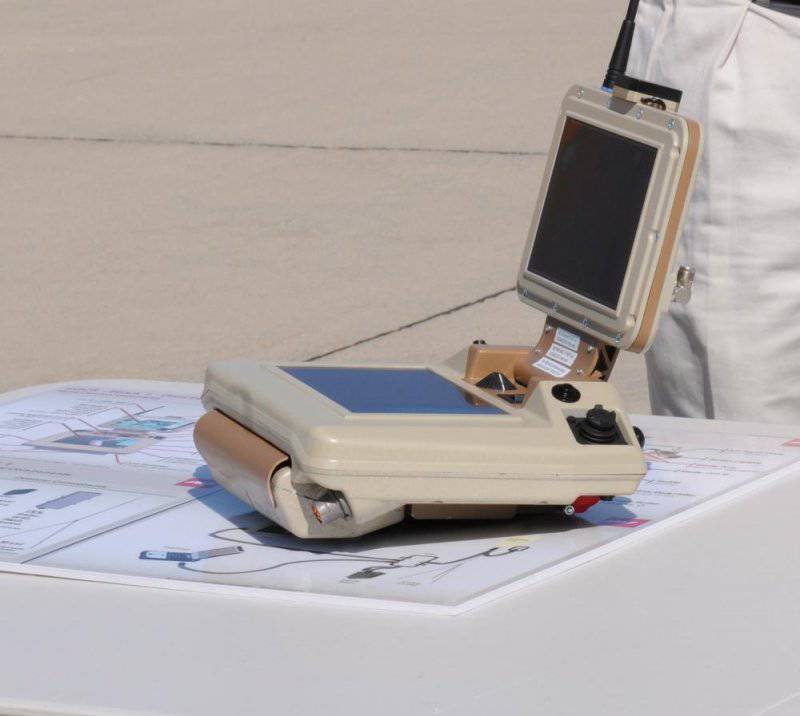
One of the main tasks is to reduce the size of remote video terminals. Manual systems (like the one in the photo) offer some potential here.
BLUEBIRD AERO SYSTEMS
The Israeli company BlueBird Aero Systems supplies not only a few UAV models, but also a video terminal to them. The company has developed a small form factor terminal, which makes it easy to handle. With a weight of no more than 3,5 kg, the terminal from BlueBird Aero Systems is the lightest product on the market. It can be powered by a car battery of 12 volts or its own battery, which provides operation for 4 hours. The operating temperature range is from -25 ° C to + 50 ° C. The terminal is capable of storing up to 64 gigabytes of data and has an omnidirectional antenna with a range of 10 km, which rises to 20 km when using a directional antenna.
BMS company
The American company Broadcast Microwave Services (BMS) has developed the terminal Carry-Viewer III. Unlike some of the systems described in the article, the Carry-Viewer III was designed not only for military users, but also for civilian services, for example, the Ministry of Emergency Situations. UAVs begin to perform more and more various tasks. They have a good potential for real-world use in the management of critical situations and industrial testing, although all the most important issues regarding the flight of these vehicles in unallocated airspace have yet to be resolved before the state of affairs here becomes critical.
The Carry-Viewer III has a high-resolution display that is well-readable in direct sunlight; battery life is up to 3 hours. AES-128 / 256 encryption (US Standard Advanced Encryption Standard-128 / 256) can be optionally added to enhance security, while the terminal itself can record and play the collected images. Several frequency bands can be processed by the Carry-Viewer III, and NTSC and PAL analog signals are generated at the output. All these features are enclosed in a device weighing almost 1,3 kg.
ELBIT SYSTEMS
Like Aeronautics, Israeli Elbit Systems is also involved in the development of a new technology by developing the MRS-2000M portable digital receiving system. The soldier can watch the transmitted image on the console, while the transceiver and antenna are placed in a satchel behind his back. In addition to displaying video and images, MRS-2000M can output telemetry data from UAVs and photos. MRS-2000M receives images transmitted in the C and S frequency bands; Optionally, it can also receive L-band data. When operating with an omnidirectional C-band antenna, MSR-2000M has a range of about 8 km (4 nautical miles) or 35 km (19 nautical miles) when using a directional antenna. In the S and L ranges, these ranges are respectively 12 km (6 nautical miles) and 50 km (27 nautical miles). MSR-2000M can accept RS-170A, NTSC, CCIR (Comité Consultatif International pour la Radio) video standards and PAL video standards; The amount of stored video is up to 30 minutes. The system has a mass of 12 kg and runs 3,5 hours on a single battery charge.
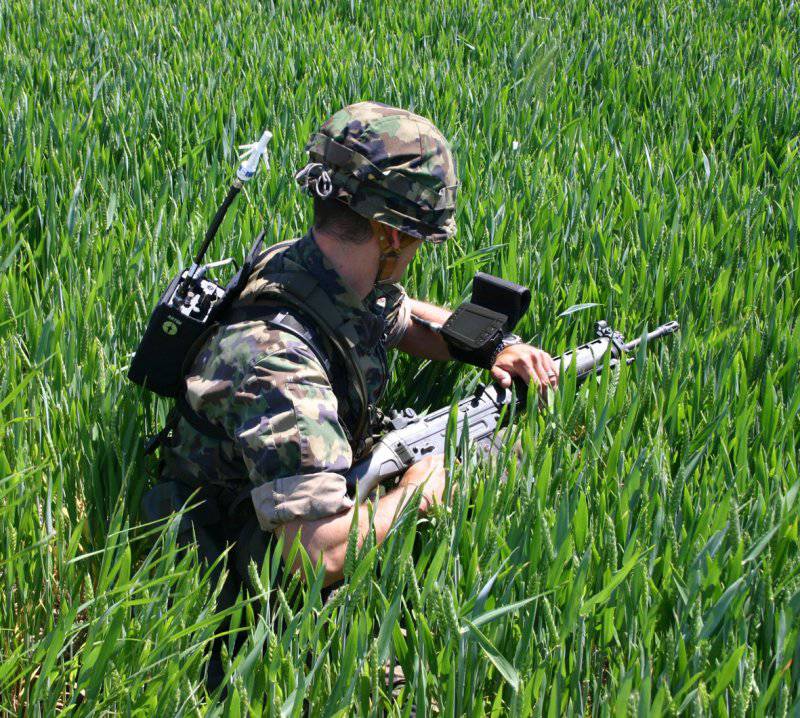
One of the easy-to-use elements of the remote video terminal V-RAMBO (Video Receiver and Monitor for Battlefield Operations) from Elbit Systems is its wrist display, allowing the soldier to watch streaming video without having to install a separate system
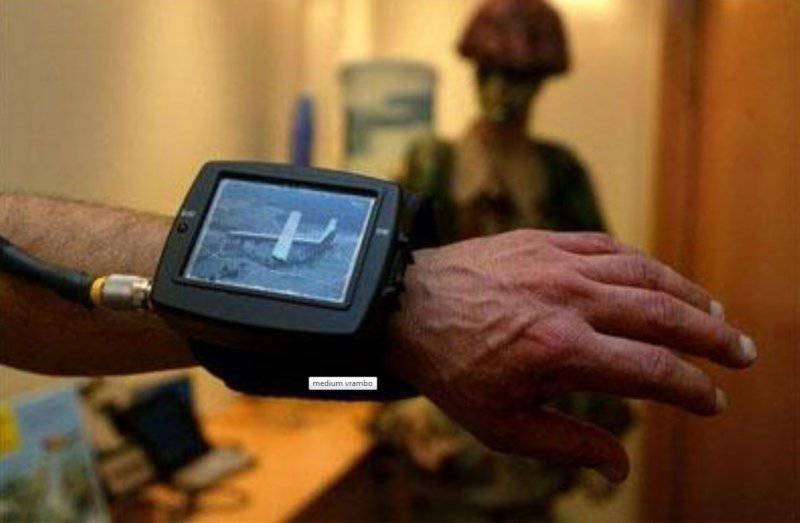
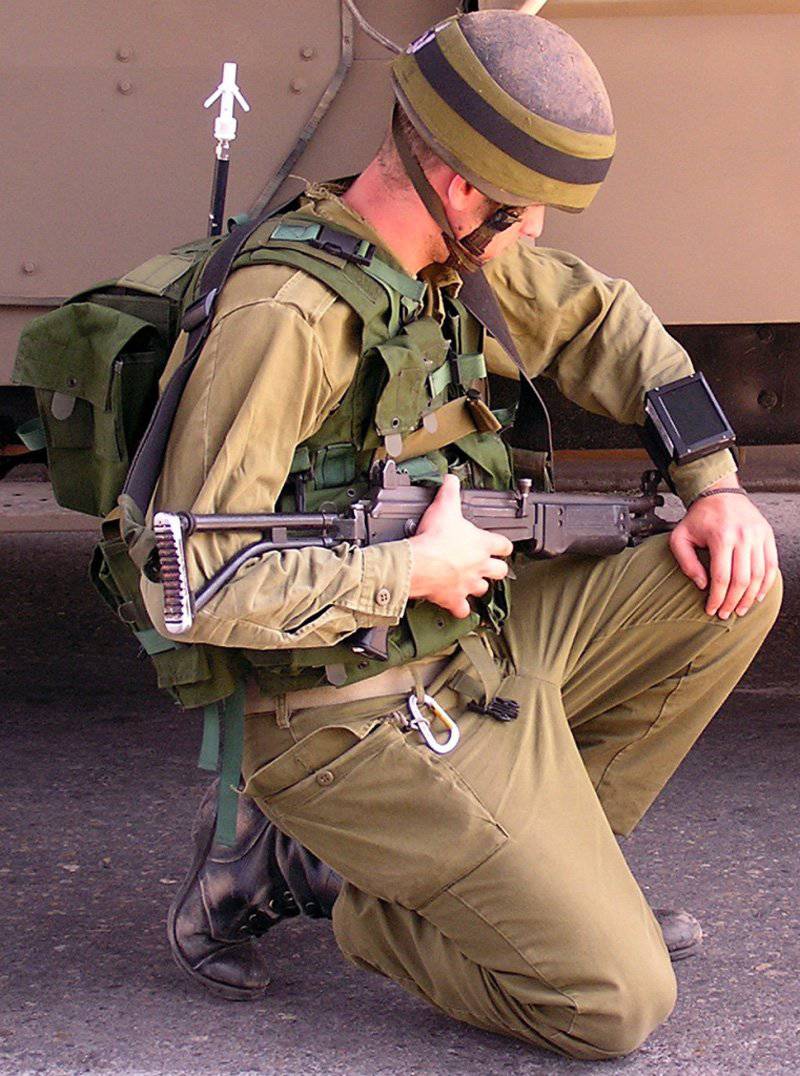
The V-RAMBO architecture includes a backpack receiver that can receive an image transmitted in the C and S frequency bands. The system has a small size and light weight, no more than 1,2 kg
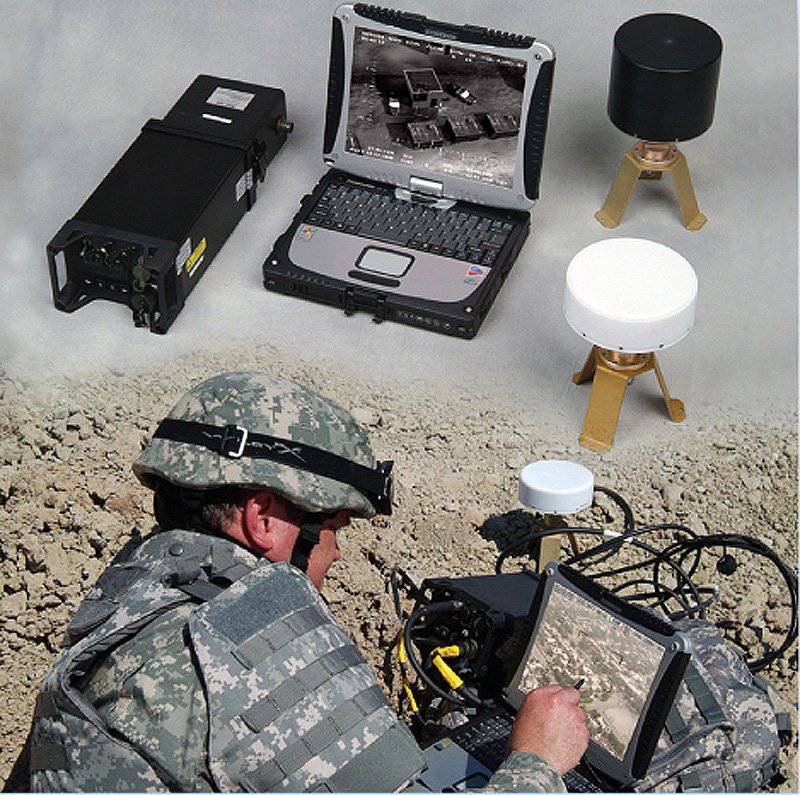
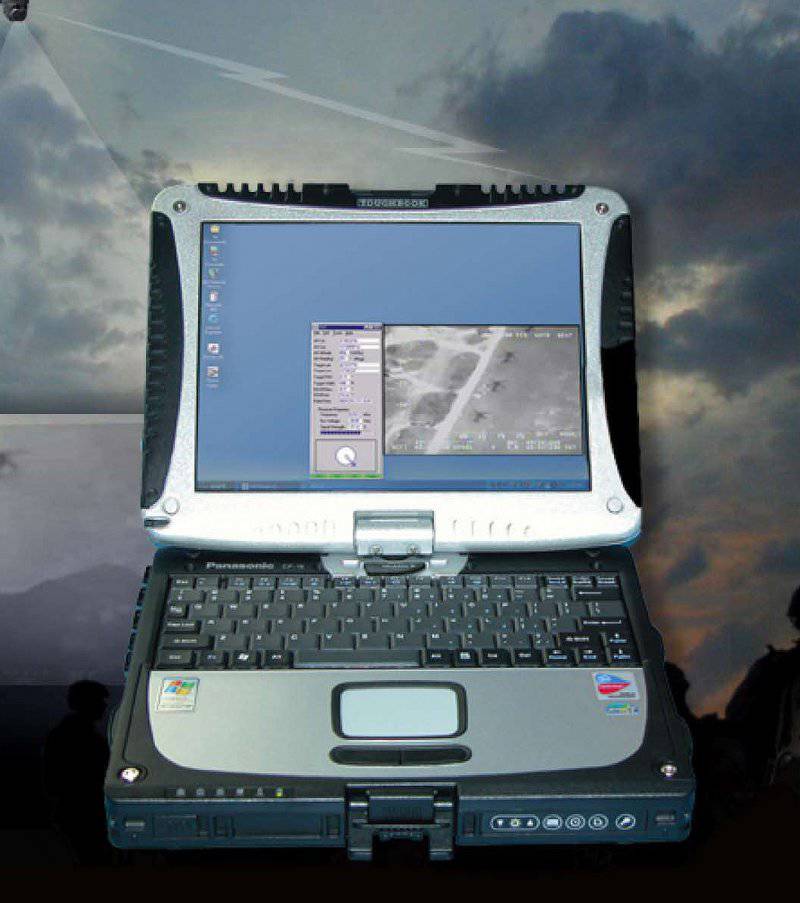
The remote video terminal from GeneralAtomic has a range of over 200 km, the entire system fits easily into a soldier’s knapsack. The terminal also allows you to control the UAV at the level of "Level-2", taking the image and data from the aircraft
GENERAL ATOMICS
Although UAVs such as the MQ-1 Predator can transfer their images to the Rover terminal (see description below), the manufacturer of the MQ-1 Predator company General Atomics produces its own remote video terminal RVT. The terminal operating in the C band may present the so-called “Level-2” data to dismounted fighters, to vehicles, to ships or airplanes at a distance of up to 200 km (108 nautical miles). The General Atomics company created its terminal with an eye to wearing comfort. It is carried in the soldiers' knapsack, including a hardened laptop, receiver, omnidirectional antenna, data processing unit plus a replaceable battery pack.
HARRIS Company
The launch of the RF-7800T RVT terminal was launched by Harris in 2009. It operates in the C, L, S bands and is compatible with communications protocols developed under the JTRS (Joint Tactical Radio System) initiative of the United States Department of Defense. Users can view the image from the terminal either on a tactical display or in a monocular instrument. The technologies introduced with the RF-7800T RVT include the Small Unmanned Aerial Systems Digital Data Link communication protocol (digital communication channel for small UAVs), which allows the user to receive images transmitted by numerous small UAVs.
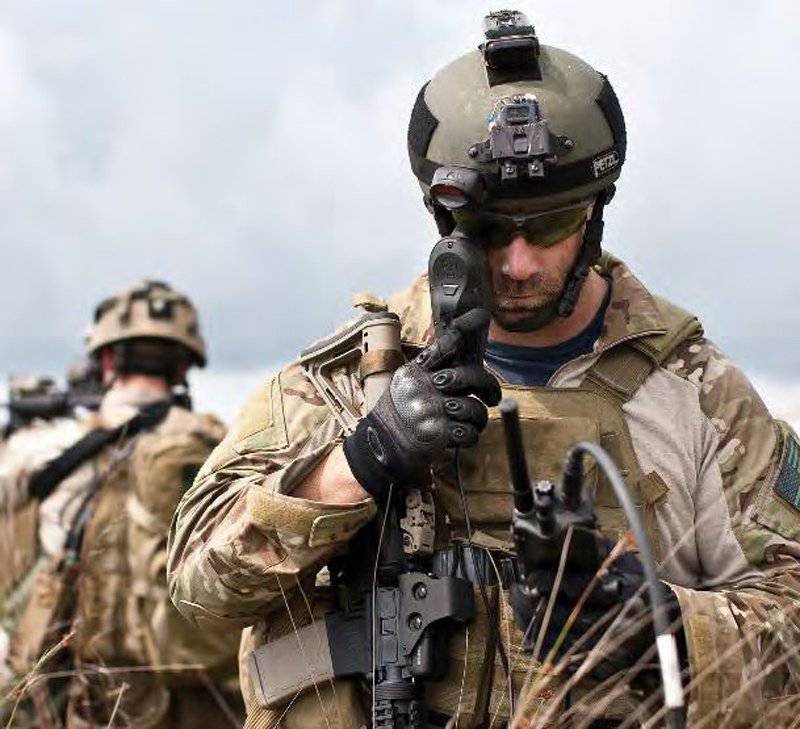
The remote RF-7800T video terminal allows you to display images either on a conventional tactical display or directly in the soldier’s eyepiece. The system was released in 2009 year and went through several stages of improvements
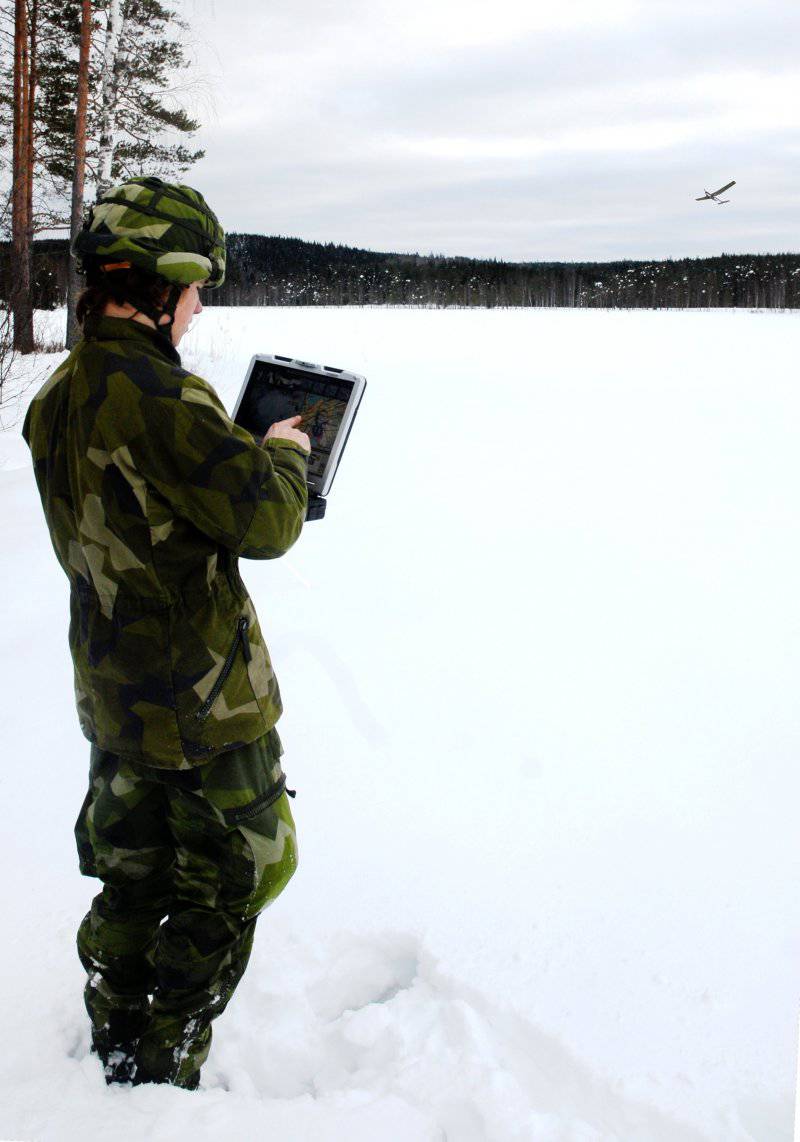
Swedish IMINT can transform ordinary hardened laptops into RVTs by installing its Ihvert software. This allows the user not to buy a specialized terminal. The software complex of this company was used to transfer images from Skylark UAVs from Elbit Systems
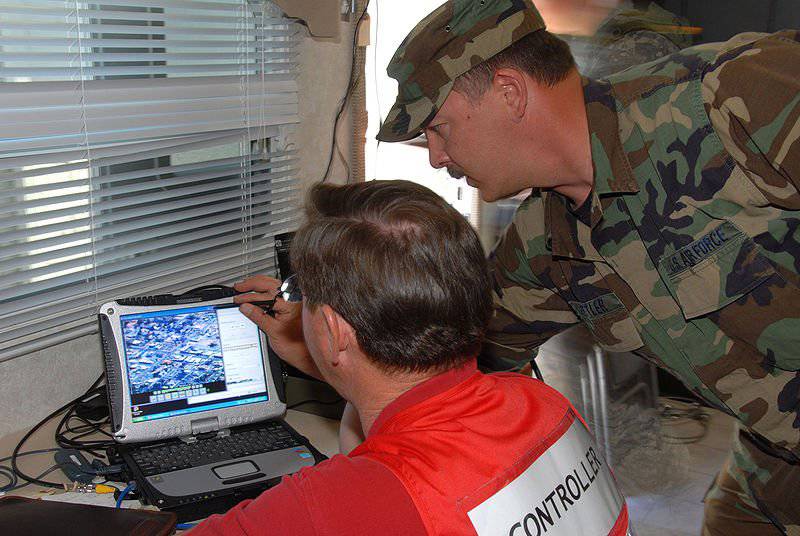
Along with the ORSVT terminal from AAI Corporation, the remote video receiver Remotely Operation Video Enhanced Receiver (ROVER) of the US Army has several versions that differ in size and functionality
IMINT company
The Swedish company Imint provides Ihvert RVT software that runs on hardened laptops and transforms them into remote video terminals. It is important that this saves money and reduces logistics costs, since it allows the user to use his standard hardened laptops as an RVT, rather than taking another additional set with him for viewing images. The Ihvert software was used to transfer images from the Skylark-I / Ii from Elbit Systems.
Rover
Perhaps the most well-known system in its class in the market - the Rover (Remotely Operated Video Enhanced Receiver - remotely controlled enhanced video receiver) - shows images obtained by manned and unmanned vehicles on a laptop-type device. Since its inception, Rover has released several options: Rover-2 entered the army in 2002, allowing servicemen to watch a picture transmitted from General Atomics MQ-1 Predator drone and armed Lockheed Martin AC-130H / U Specter / Spooky-II. However, the Rover-2 terminal was a fairly large system and was usually transported in a military vehicle High Mobility Multipurpose Wheeled Vehicle (HMMWV) manufactured by AM General. Despite its size, the Rover-2 was a revolutionary product, as soldiers could now directly watch images from the drone without having to maintain constant contact with the ground station of the unmanned vehicle and question the pilots what they see there.
The miniaturization work has led to a reduction in the size of the Rover-2 terminal to the size of a portable device weighing 5 kg. Gradually not only the size of the Rover decreased, but also its capabilities expanded. L-3 Communications has replaced Rover-2 with Rover-3. This multi-band terminal could receive images in the C, L and Ku bands. Over 2000 terminals Rover-3 was manufactured and delivered, among other things, to American allies.
In 2007, the Rover-4 terminal debuted, which added the ability to work in the S range. It introduced the function of working with GPS coordinates, which allows the terminal operator to click on the zones that he would like to study using his drone, and then direct it accurately at given coordinates. In addition, the Rover-4 allows users to communicate directly with a ground attack aircraft aviation support, and therefore improve coordination between advanced air gunners and pilots. From the perspective of aviation support, it is very important to be able to exchange images between an advanced observer equipped with a Rover terminal and an aircraft in the air. This ensures that the attack is carried out at the correct target and helps to reduce cases of fratricide and indirect losses.
Later incarnations of Rover, such as Rover-5 and Rover-5i (also known as mRover), are designed as transceivers that can process images with strong encryption in accordance with the Type-1 standards of the United States National Security Agency and are compatible with the Common Data Link communication protocol (CDL) Ku-band. Rover-5i is an export version of the Rover-5 with AES-256 encryption, which appeared on sale in 2010 year.
In January, the United States Air Force 2013 tested a Net-T wireless router (a device for connecting networks using different architectures and protocols) for the Northrop Grumman AN / AQQ-28 (V) Litening and Lockheed Martin AN / AA-33 Sniper suspension container systems. which allows, through communication repeaters of the same container systems of the aircraft, to use Rover-5 to exchange information, voice and graphic data between soldiers equipped with this terminal. The US Air Force hopes to deploy Net-T in 2014 year.
Meanwhile, if the Rover-5 / 5i terminals are portable devices, their successor, Rover-6, is perhaps better suited for "semi-stationary" installations, such as field headquarters, ships or vehicles. The Rover-6 itself is a development of the earlier Rover-3 / 4 terminal (see above). Along with the use of the communication frequencies described above, Rover-6 can process work at ultrahigh frequencies (UHF) (300 MHz - 3 GHz). In addition, the Rover-6 can be connected to the digital communication channel used by the RQ-11 Raven drone. Security is guaranteed through the use of encryption standards Triple-DES (Data Encryption Standard), AES and Type-1. Since the Rover-6 is a two-channel system, these two channels can be used to process the traffic of two different frequency channels or can be combined to receive images from one source. The smallest option in the L-3 Rover family is the five-way Tactical Rover terminal (UHF, C, L, S, and Ku), which is a portable AES encrypted receiver.
SAGEM company
It may seem that mainly companies from the USA and Israel supply RVT, but the French Sagem is also active in this field and is producing a tactical remote video terminal TRVT (Tactical Remote Video Terminal). It is built on a hardened hand-held touchscreen, which is integrated into the hardened Panasonic Toughbook CF-19 laptop. TRVT operates in the C, S and UHF bands; when using an omnidirectional antenna, the range is about 20 km. It also has GPS and upgradeable maps with an encryption option (at the user's request). The mass of the entire TRVT system is 11 kg and it can work up to 4 hours from a single battery charge.
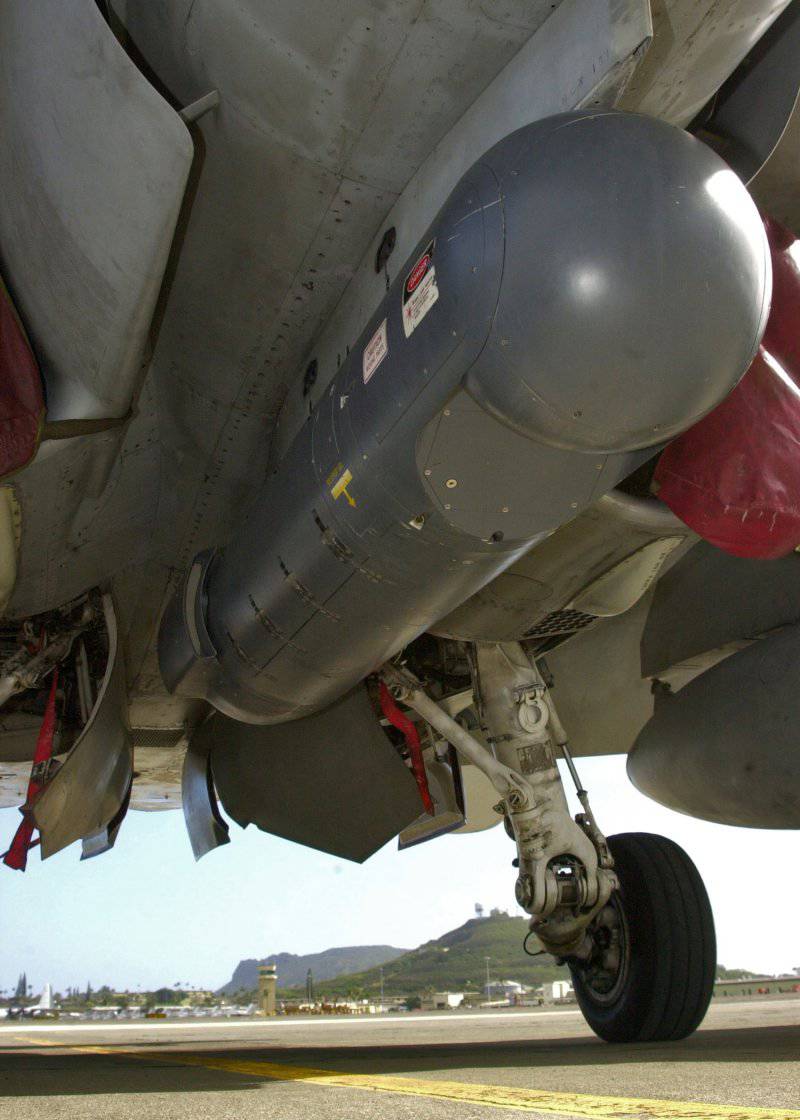
Although remote video terminals are mainly associated with the viewing of images collected by drones, they can also be used to view images of unmanned aerial vehicles, such as Litening, collected by an outboard container sighting and navigation system.
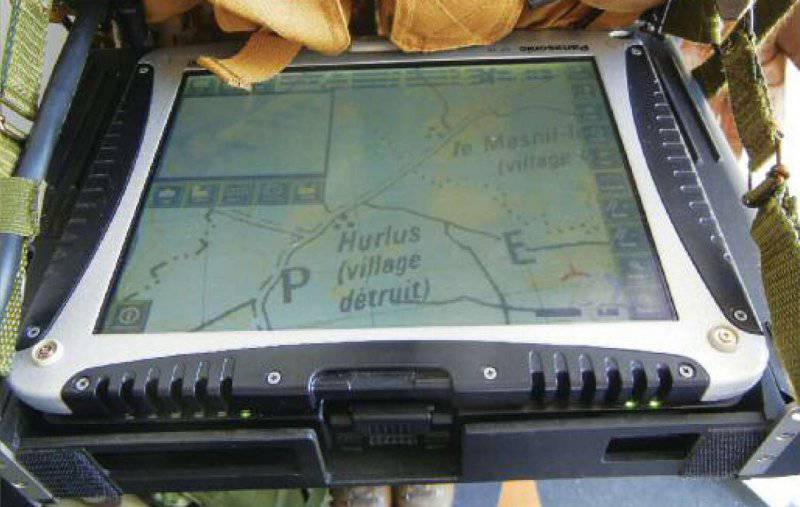
Tested in combat and used in conjunction with the Sperwer UAV, the Sagem TRVT terminal will also work with the new medium-altitude UAV with a long Patroller flight
TADIRAN SPECTRALINK company
The Israeli company Tadiran Spectralink also adheres to innovative methods. Her V-Rambo device got its name from the acronym “Video Receiver for Tactical Battlefield Operations” (video receiver and monitor for tactical combat operations), and not in honor of the hero of the militants John Rambo. While the display of the V-Rambo system can be worn on the soldier’s wrist, the corresponding antenna, video receiver and battery are carried in the soldier's vest. V-Rambo can receive images in the C and S bands, and GPS is also integrated into the system. Continuous operation up to 5 hours is possible, and the mass of the entire system is slightly more than 1 kg.
V-Rambo is one of several such terminals manufactured by Tadiran Spectralink. Wrist-worn SL-Rambo, for example, may include optional AES encryption, although it only receives images in the S band, unlike the V-Rambo operating in the S and C bands. It accepts images at up to 1,4 Mbps and can work either in a fixed frequency mode or in a frequency hopping mode. The SL-Rambo lasts up to 4 hours and weighs a little less than the V-Rambo. And finally, the V-TVR (Vehicle Tactical Video Recorder) terminal from Tadiran Spectralink is designed for vehicles. It operates in S and C bands and can use omnidirectional, directional and hemispherical transmitters. V-TVR can be installed on a variety of vehicles, ranging from jeeps to the main combat tanks.
Evolution
Why should the military simply not use the technology of smartphones from the civilian world and adapt it to their needs? In the end, the technology there is ready and tested. If you compare the cost, then a full-fledged I-phone or Samsung Galaxy are incredibly cheap compared to their military counterparts. A recent conversation with an engineer from a military assets company shed light on the situation: “We could use civilian cellular communications for military personnel tomorrow to provide motion video. But then we must guarantee the reliability of the technology, its performance in various external conditions, its stability, to ensure the ability to work with at least several different image and video formats. ” All this greatly increases the cost of products for the military, plus the cost of advanced and intensive tests, the volume of which is incomparable with the volume of tests of civilian products, must be taken into account. Ultimately, it is more efficient to develop and manufacture specialized RVT terminals for the military from scratch. Of course, some off-the-shelf components may be included in such RVTs, which will slightly reduce their cost. Nevertheless, it can be said with certainty that, as for civilian products, the size, weight and power consumption of remote video terminals for the military will steadily decrease in the future.
Materials used:
Armada International 5 / 2013
www.harris.com
www.bluebird-uav.com
www.aeronautics-sys.com
www.elbitsystems.com
www.l-3com.com
www.tadspec.com
Information